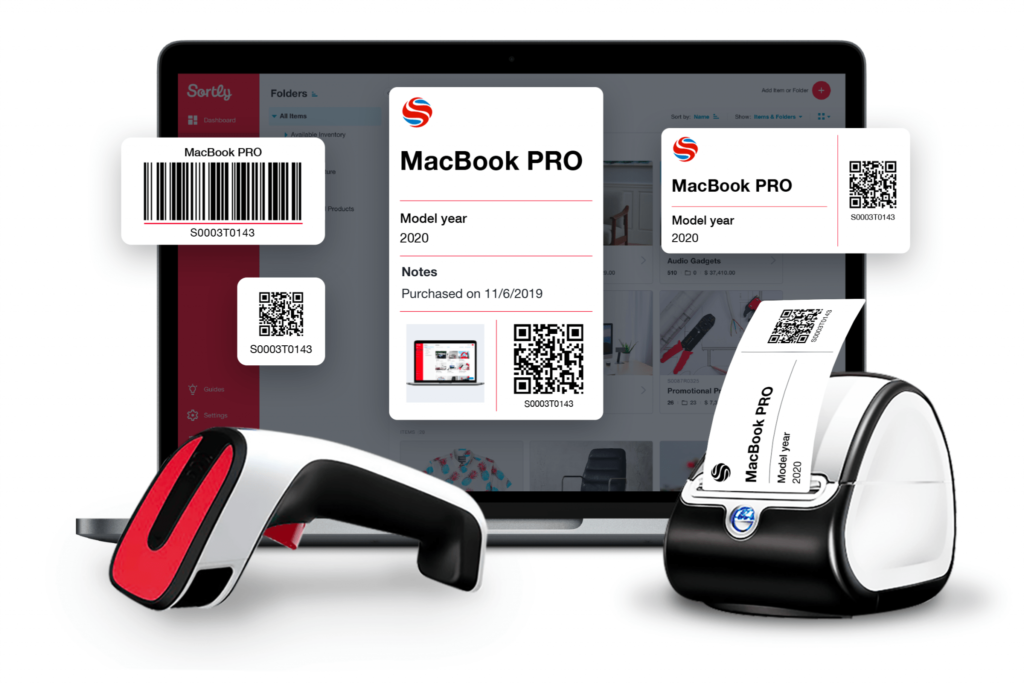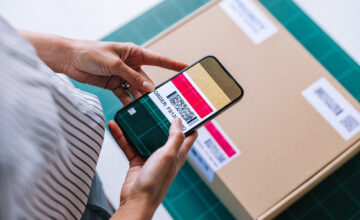QR codes can be your inventory management secret weapon, giving you new, fast, and effective ways to store and share information about the products your business stocks, sells and shuffles around.
QR codes are three-dimensional codes that store large amounts of data. They can quickly be read by scanners and even your phone’s smartphone, allowing you to access that data. QR codes are modernizing classic barcode inventory systems, and they make inventory management software more useful than ever before.
After all, inventory management can be chaotic, especially if you’re lacking the right tools to keep everything in order. QR codes can help your team cut back on the chaos and ensure that you’re able to track all of your inventory quickly and easily. They may seem intimidating at first, but they’re incredibly easy to use and come with a hefty list of advantages.
Want to know why QR codes can be so advantageous? Let’s take a look at 5 ways QR codes will supercharge your inventory management strategy.
1. QR Codes Store an Enormous Amount of Data
Unlike traditional barcodes, QR codes can store an incredible amount of data. They’re capable of holding more than a thousand alpha-numerical characters, letting you go beyond a simple product name, short description, and price. You can also add in batch numbers, place of manufacturing, and more.
The sky’s the limit here in terms of what information you want to store within a QR code. If you’re working with detailed products, this is an enormous asset. This can also cut down on data entry time for your team, which is an automatic perk.
2. QR Codes are Fast & Easy to Use
QR codes are fast and easy to use. That’s a benefit in and of itself.
All smartphone cameras are capable of reading QR codes within the inventory management app of your choice, and they can do so almost instantaneously. A quick scan of the QR code from your mobile phone is all that’s needed to check products in or out of your inventory system.
As your team spends less time doing the tedious manual labor, they’ll also have more time to focus on the tasks that need their attention most.
3. You Can Quickly Create Custom QR Codes As Needed
Do any of your products come to you without QR codes attached? No problem! Or maybe you create products that need to be inventoried. Don’t sweat it.
The best inventory management tools can generate custom QR codes quickly. You can then print and attach the QR code to the correct items. This also means you can easily reprint QR codes if a label gets damaged.
The ability to create custom QR codes as needed is an enormous asset, allowing you to keep track of your entire inventory effortlessly–and on your terms!
4. QR Codes Don’t Require Expensive Scanners
Tired of paying for expensive scanners that are bulky, difficult to use and a waste of valuable resources?
QR codes don’t require fancy barcode scanners, which are typically expensive, cumbersome, and require close proximity or physical connection to a computer system. Instead, they can be read by inventory management apps and your phone’s camera.
Cloud-based technology works at its finest here, offering both secure and convenient scanning capabilities.
That being said, if you’re attached to your scanners and want to keep using them, some inventory management tools offer integration with some Bluetooth scanners, allowing you to take full advantage of your investment.
5. QR Codes Make It Easier to TrackInventory
Ease of use is an enormous asset. f you want to quickly see what items in your inventory you have available (and what you need to reorder!), QR codes are a great choice.
Digital tracking labels like QR codes are vastly preferable to manual systems, which are often based in Excel spreadsheets. There’s little risk of human error, and all you need is a simple scan from your smartphone, even if you’re on-the-go.
6. QR Codes Aren’t Prone to Human Error
QR codes are much less error-prone than manual systems. They’ll save you time and energy on a day-to-day basis, but they’ll also save you from a potentially time-consuming and even costly error that could happen with a manual system.
Manual systems can work for small businesses with limited quantities of small inventories. A single mistake, however, can result in you running low on stock or out of supply. This can throw off your records and be a nightmare to sort out.
Because QR codes are automated and only require a simple scan, mistakes happen much less frequently, making them a great inventory management choice.
Conclusion

QR codes are an enormous asset in inventory management, and they’re incredibly convenient and efficient. They’re also easy to adapt to, so if you need to do a minor overhaul to change up your tracking system, it will likely be easier than you think.
Look for an inventory management app that allows you to use and generate QR codes or barcodes. While QR codes are more versatile and offer more perks, barcodes are also a popular and effective tracking method, so an app that offers both can benefit the vast majority of businesses.
Interested in checking out an inventory management tool that utilizes QR codes? Start a free trial of Sortly today!




